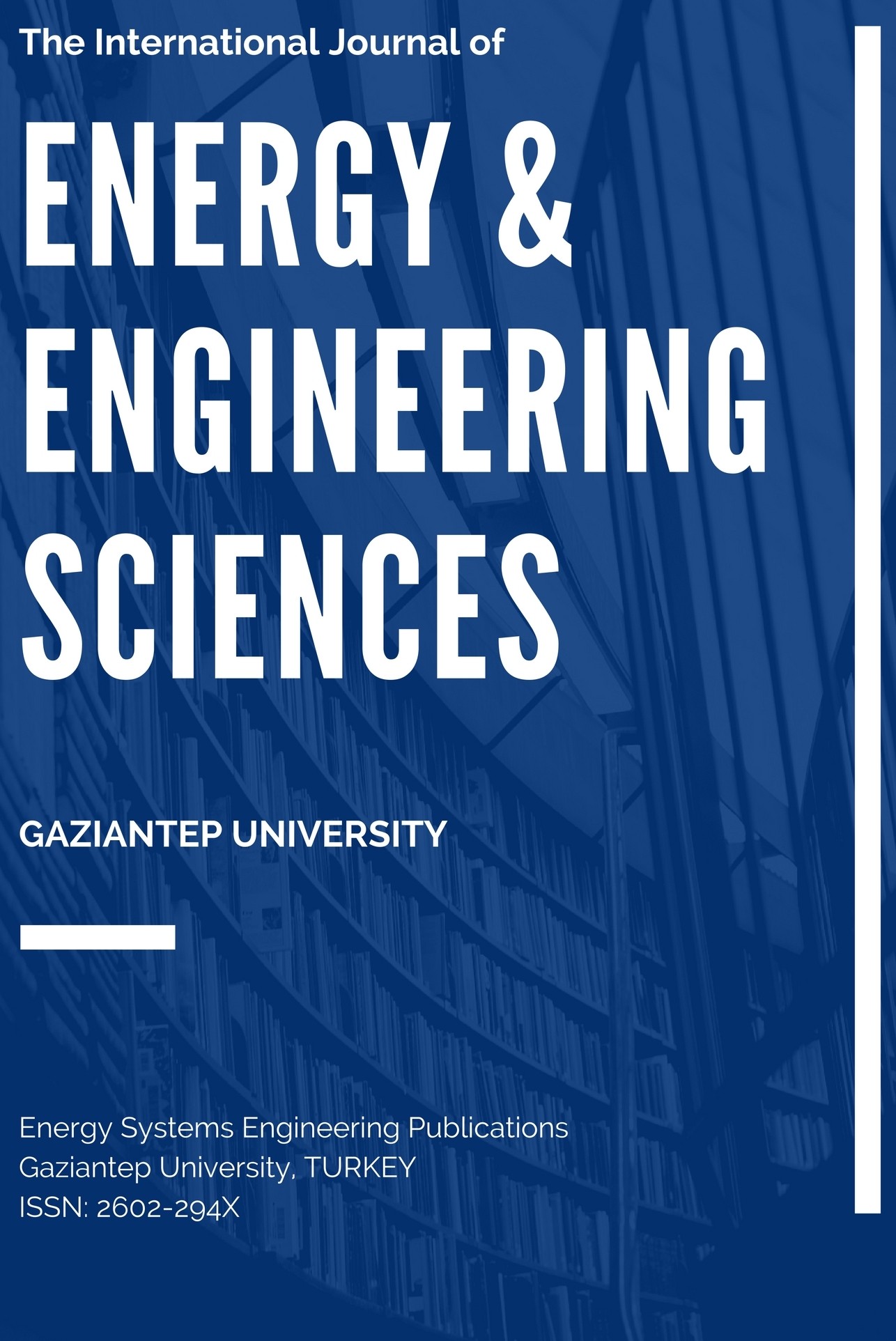AN EXPERIMENTAL STUDY ON THE DETERMINATION OF THERMAL CONDUCTIVITY, HEAT CAPACITY AND THERMAL DIFFUSIVITY OF A POROUS METAL FOAM
AN EXPERIMENTAL STUDY ON THE DETERMINATION OF THERMAL CONDUCTIVITY, HEAT CAPACITY AND THERMAL DIFFUSIVITY OF A POROUS METAL FOAM
Copper Foam, Temperature, Porous Medium, Porosity Thermal Conductivity, SEM,
___
- [1] Xu, H.J.; Qu, Z.G. & Tao, W.Q. (2011b). Thermal Transport Analysis in Parallelplate Channel Filled with Open-celled Metallic Foams. International Communications in Heat and Mass Transfer, Vol.38, No.7, (August 2011), pp. 868- 873, ISSN 0735-1933
- [2] Banhart, J. (2001). Manufacture, characterisation and application of cellular metals and metal foams, Progress in Materials Science, Vol.46, No.6, (2001), pp. 559- 632, ISSN 0079- 6425
- [3] Xu, H.J.; Qu, Z.G. & Tao, W.Q. (2011a). Analytical Solution of Forced Convective Heat Transfer in Tubes Partially Filled with Metallic Foam Using the Two-equation Model. International Journal of Heat and Mass Transfer, Vol. 54, No.17-18, (May 2011), pp. 3846–3855, ISSN 0017-9310
- [4] Xu, H.J.; Qu, Z.G. & Tao, W.Q. (2011b). Thermal Transport Analysis in Parallelplate Channel Filled with Open-celled Metallic Foams. International Communications in Heat and Mass Transfer, Vol.38, No.7, (August 2011), pp. 868- 873, ISSN 0735-1933
- [5] Xu, H.J.; Qu, Z.G.; Lu, T.J.; He, Y.L. & Tao, W.Q. (2011c). Thermal Modeling of Forced Convection in a Parallel Plate Channel Partially Filled with Metallic Foams. Journal of Heat Transfer, Vol.133, No.9, (September 2011), pp. 092603.1-092603.9, ISSN 0022- 1481
- [6] V.V. Calmidi, Transport Phenomena in High Porosity Metal Foams (Ph.D. Thesis), University of Colorado, Boulder, CO, 1998.
- [7] P. Du Plessis, A. Montillet, J. Comiti, J. Legrand, Pressure drop prediction for flow through high porosity metallic foams, Chem. Eng. Sci. 49 (1994) 3545e 3553.
- [8] I. Kurtbas, N. Celik, I. Dinçer, Exergy transfer in a porous rectangular channel, Energy 35 (2010) 451.
- [9] I. Ghosh, How good is open-cell metal foam as heat transfer surface, Trans. ASME: J. Heat Transfer 131 (2009) 101004-1–101004-8.
- [10] M. Kaviany, Principles of Heat Transfer in Porous Media, 2nd Edition, Springer, New York, 1995.
- [11] N. Dukhan, K.C. Chen, Heat transfer measurements in metal foam subjected to constant heat flux, Exp. Therm Fluid Sci. 32 (2007) 624–631.
- [12] N. Dukhan, P.D. Quiñones-Ramos, E. Cruz-Ruiz, M. Vélez-Reyes, E.P. Scott, One dimensional heat transfer analysis in open-cell 10-ppi metal foam, Int. J. Heat Mass Transfer 48 (2005) 5112–5120
- ISSN: 2602-294X
- Yayın Aralığı: Yılda 2 Sayı
- Başlangıç: 2016
- Yayıncı: Gaziantep Üniversitesi
DESIGN OF MULTIBAND ANTENNAS LOADED WITH ARRAYS OF CSRR AND CIRCULAR HEAD DUMBBELL STRUCTURE
Amer Hasan Al Gölge Ögücü SHATHR, YETKİN
USE OF SEWAGE SLUDGE ASH IN SOIL IMPROVEMENT
Süleyman DEMİR, Ali Fırat CABALAR
REHABILITATION OF HIGH STRENGTH REINFORCED CONCRETE CORBELS USING BASALT FIBER FABRIC
Adnan Hazem ALSHAWAF, Mehmet Eren GÜLŞAN
Ozkan KIREC, Melda Ozdinc CARPINLIOGLU
EFFECT OF STIFFENERS ON STRUCTURAL BEHAVIOR OF STEEL LIQUIDS TANK
Mahmood Hunar DHEYAALDIN, Mustafa ÖZAKÇA, Abubaker Sami DHEYAB
